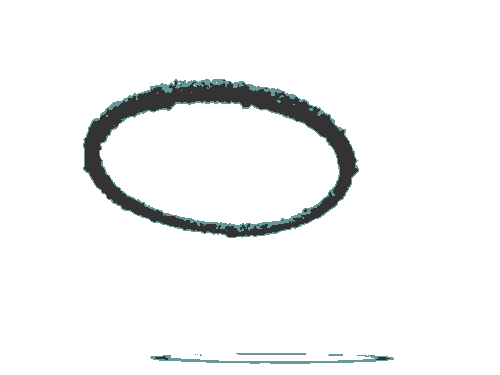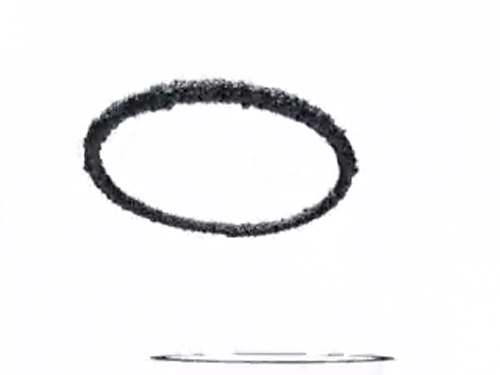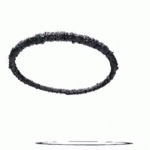Let’s get the ball rolling
Here is the script from Sarah’s Critique episode of The Art Assignment. I said in my previous post I would post here. Mainly as a quick guide for me to work from when I write my summaries.
“This week I want to talk to you about something that’s been weighing on my mind lately. And that’s the issue of critique. If you spend any time on the Internet, it’s something you come across frequently. If you’re the victim of Internet trolls or if you are an Internet troll, listen up! There is an etiquette to critique that has been in play for a long time in art schools all over the world. Let’s see if we can learn something from that world and apply it in ours.
So here’s how an art critique usually goes: An art student sets up their work to show their teacher, a group of teachers, their friends, their class, or an even bigger group. Then discussion ensues, questions are asked, and criticism is offered. Sometimes things do go awry. Tears are shed and expletives hurled, but it’s usually a civilized affair, and there is an etiquette to these things that I think it would be useful for us to discuss. In relation to The Art Assignment, and to the Internet community at large.
But first, let’s talk about why we should critique in the first place. Because it’s the Internet, and you can anonymously say whatever you want? I’d say no. Because you like to change the minds of the person you’re critiquing? Definitely no. Critique is often most instructive for the person offering it. In looking at other people’s work, and formulating your opinion of it, you’re learning a great deal.
I don’t often see people responding to Internet comments by saying, "Gee, thanks! I never thought about it that way! I agree with you now.” But that’s okay, because it’s still a constructive process. It can help shape your beliefs and teach you about different ways of looking and thinking. That being said, here are some important critiquing guidelines:
- Be attentive. The Internet has trained us to look at something for a millisecond, and to scan text quickly. Fight that urge. Let something linger on the screen for seconds or even minutes! Look at it once, and then look at it another time later in the day, or the next day, or the next week. I often have instinctual reactions when I first see something but then my opinion changes the longer I spend with it. Or, even a week late when I’m remembering it. Use your faculties and your patience and trust your reactions.
- Don’t be lazy. I am a terrible example to follow. When I look at all of the responses that come into The Art Assignment, my head fills with ideas, but then I get a phone call or I’m in a hurry, and I just reblog something or say something tepid, instead of saying substantive about it. I also lean way too heavily on the word “interesting.” It’s value-neutral, which is helpful, but it also says very little. For example: the history of documentary photography is interesting. But The Simpsons is also interesting. It’s not a particularly specific adjective. There are lots of lazy words, and it’s okay to use them sometimes, but try to follow them up with something that has teeth. Insteadbof saying, “This is great!” say, “This is great, because you’ve done A, B, and C, and then surprised us all by adding D!”
- Be generous. Try to look at each work of art for what is successful. Performance artist Matthew Goulish tells us in an essay on criticism to look for the “aspects of wonder.” We want to encourage more wonder in the world, right? So when we come across it, let’s celebrate it. Criticism can be an incredible act of empathy. What made someone make that thing? Why did they do it that way? Be sympathetic to the maker, and realize that the mere act of putting yourself and your work out there takes courage.
- Find your point of entry. You don’t have to have a Ph. D. in Art History to talk about art. So find your point of connection to a piece, as personal as you’d like it to be. For example, this reminds me of a bathmat, in the best possible way, because its tactility is enticing and it transports me instantly to my friend’s bathroom circa 1997, which had floral wallpaper and smelled like Garnier Fructis shampoo. As it happens, it is a bathmat, and not an artwork, but it could be an artwork. Think about what the thing in question reminds you of, whether it’s from the same discipline, something personal, or something far-flung. Think about the decisions that were made along the way. Maybe it’s the materials used, or not used. Maybe it’s the way it’s been arranged in space, or documented for us to see. Maybe it’s what the maker decided to include or exclude from the frame of the work. What are the skills on display? Maybe the artist is not an amazing draftsperson, but still ended up with a delightfully peculiar, delicately rendered drawing that communicates much more than a perfectly photo-realistic drawing might have done. Maybe the ideas behind a project outweigh the execution. Maybe the execution outweighs the ideas. And if you can’t think of anything declarative to say, ask a question.
- Don’t be a jerk. There is a lot you can say about something without declaring it to be good or bad. It can be a productive challenge to try to not make any value judgements while talking about a work. Most art critiques take place in a room where all the individuals have to look at each other’s faces and deal with the immediate consequences of saying something provocative. Pretend you’re in the same room with the person you’re critiquing. Pretend they’re someone you know. I’m not saying to lie or blow smoke; I’m saying don’t be a jerk!
And finally, why make yourself available for critique? Faced with the reality of all the Internet trolls in the world, it’s completely understandable to stay in your hole and not participate in Internet communities. I totally get that. But the positives of participating in this and other online projects can be real and rewarding. It’s hard to have perspective on your work. And offering it up for review means you might have the chance to see it with fresh eyes, and learn from the experience of others. But it also makes you vulnerable, which can be a miserably crappy feeling, but sometimes a liberating and empowering one.
If you can try to take your ego out of it, you can learn a great deal. “
Sound advise for talking online, about art and many other things.
(Animated by gifadog from Archive.org CC0 footage)








Leave a Reply